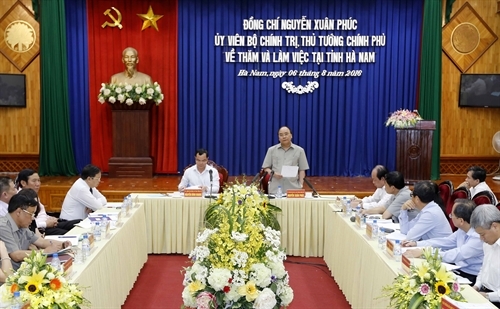 Politics & Law
Politics & Law

Prime Minister Nguyễn Xuân Phúc has urged the northern province of Hà Nam to promote hi-tech agriculture and accelerate the building of new-style rural areas.
 |
| Prime Minister Nguyễn Xuân Phúc has urged the northern province of Hà Nam to promote hi-tech agriculture and accelerate the building of new-style rural areas. — VNA/VNS Photo |
HÀ NỘI — Prime Minister Nguyễn Xuân Phúc has urged the northern province of Hà Nam to promote hi-tech agriculture and accelerate the building of new-style rural areas.
At a meeting with Hà Nam’s key leaders on Saturday, the Government leader commended the province for recording one of the highest growth rates among localities in the Red River Delta and for effective investment attraction.
Hà Nam should optimise its geographical location as a gateway to the capital city to spur its development, he said, asking the provincial leaders to pay more heed to local planning.
The PM reminded the province that sustainable development should be paired with environmental protection, suggesting Hà Nam increase its investments in tourism services to conserve the ecological system.
For their part, the provincial leaders proposed the Government and the PM create mechanisms to help universities and central-level hospitals in Hanoi relocate to or build branches in Hà Nam.
They asked the Government to support Hà Nam in attracting projects in processing, manufacturing and high-tech and create optimal conditions for the locality to access financial resources of the State budget, Government bonds and ODA loans.
Earlier, PM Phúc visited a 20ha farm run by An Phú Hưng Company, one of the typical high-tech farming models in Hà Nam that produces organic vegetables using Japanese technologies.
He also toured construction sites of branches of the Bạch Mai Hospital and the Việt Đức Friendship Hospital, which have been built to ease overloading at their existing facilities in the capital city.
The leaders suggested Hà Nam encourage private investment in the satellite hospitals and service supply to big hospitals in the province. — VNS




